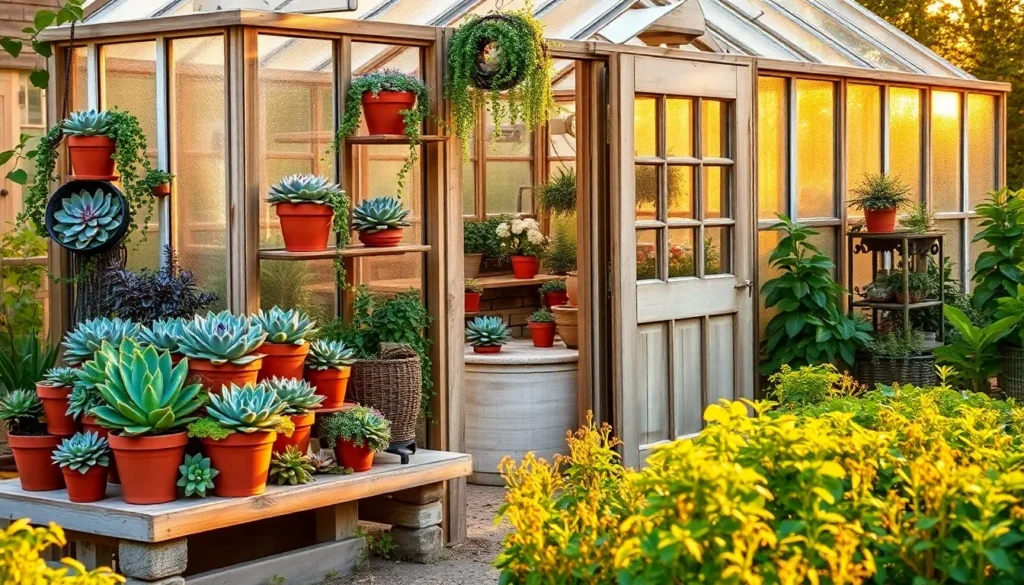Imagine stepping into your own backyard oasis, where vibrant greens and colorful blooms thrive no matter the season. Whether you’re a gardening novice or a seasoned pro, “15 Best Backyard Greenhouse Projects” is your key to unlocking the magic of year-round cultivation. This guide is meticulously crafted to inspire and empower you, filled with creative and practical greenhouse ideas that cater to all skill levels.
Each project offers not only the joy of nurturing life but also the satisfaction of reaping tangible rewards. From extending growing seasons to cultivating exotic plants, these greenhouse projects promise to transform your gardening experience. As you explore these pages, you’ll gain the confidence and know-how to turn your backyard into a thriving greenhouse haven, full of life and beauty.
Custom Ventilation Panels (Optimized Airflow Control)
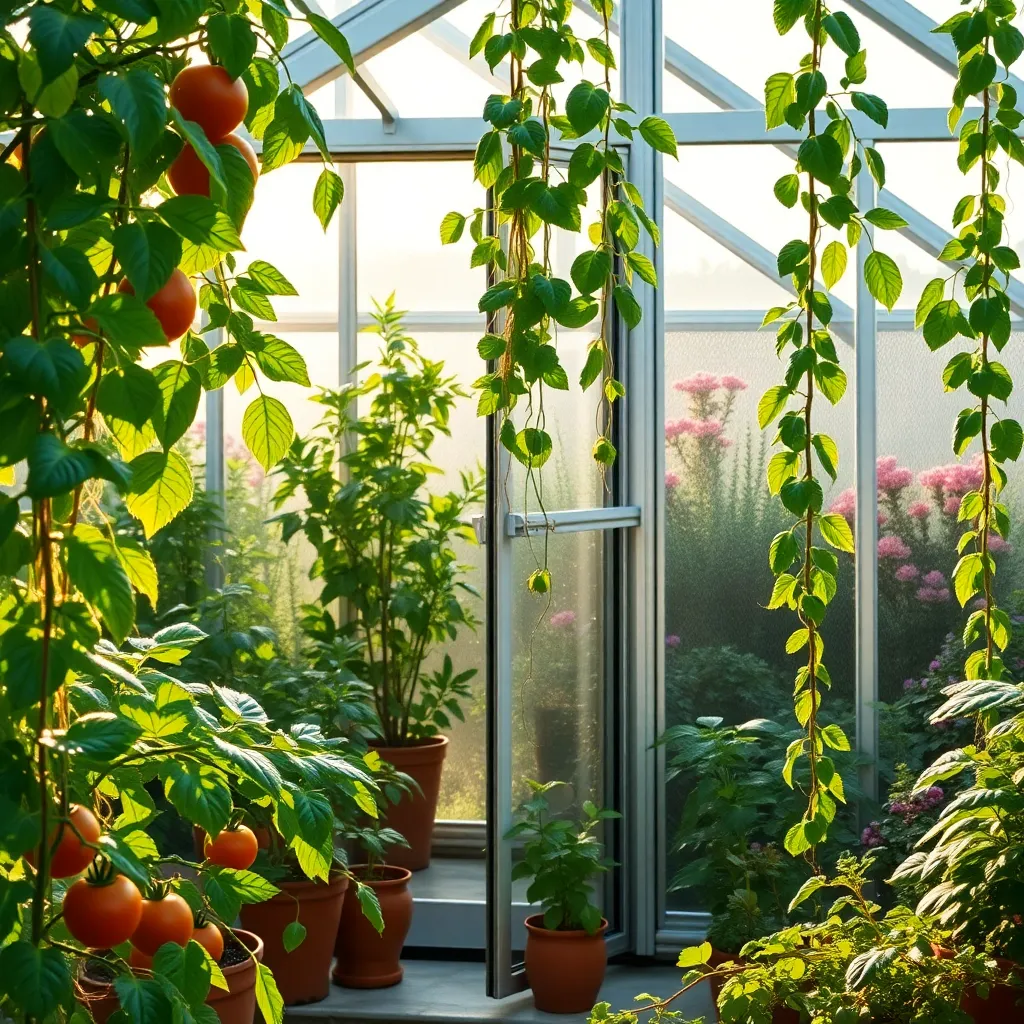
Custom ventilation panels are a game-changer for optimizing airflow within your backyard greenhouse. They allow you to manage temperature and humidity levels, which are crucial for healthy plant growth.
By installing these panels, you can create an environment that minimizes the risk of plant diseases caused by excess moisture. This is especially beneficial for plants like tomatoes and peppers, which thrive in well-ventilated, less humid conditions.
To get started, consider the specific needs of your plants and the local climate. Adjustable panels are ideal because they can be opened or closed to match weather changes, ensuring your plants receive just the right amount of airflow.
For beginners, a simple setup with manual sliders might be sufficient, allowing you to learn how different conditions affect your plants. More experienced gardeners might invest in automatic sensors that adjust panel positions based on real-time measurements of temperature and humidity.
It’s advisable to monitor your plants closely after installing ventilation panels to understand their specific needs better. Regularly check for signs of stress, such as wilting or discolored leaves, and adjust the panels accordingly to provide optimal growing conditions.
Compact Hydroponic Towers (Space-Saving Vertical Growth)
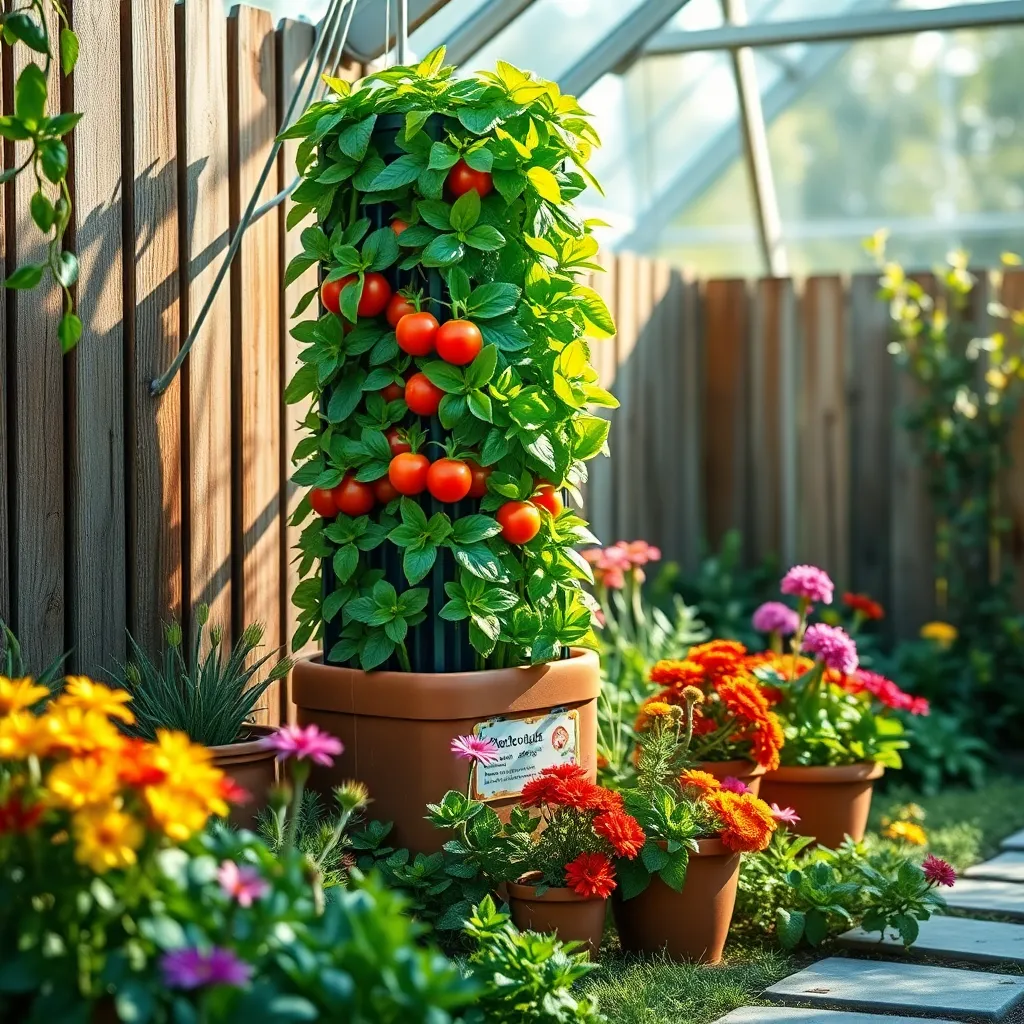
Compact hydroponic towers are an excellent solution for maximizing space in your backyard greenhouse. These vertical systems allow you to grow a variety of plants, from leafy greens to strawberries, using nutrient-rich water instead of soil.
To set up a hydroponic tower, you’ll need a water pump, a reservoir, and a growing medium such as rock wool or coconut coir. Ensure that your tower receives plenty of light, ideally through a combination of natural sunlight and supplemental LED grow lights to promote healthy growth.
Maintaining the correct nutrient balance is crucial for plant health in a hydroponic system. Regularly test the pH and nutrient levels to keep them within the optimal range, typically between 5.5 and 6.5 for most plants, ensuring efficient nutrient uptake.
Beginners can start with easy-to-grow plants like lettuce, spinach, and herbs, which thrive in hydroponic conditions. For more experienced gardeners, try growing tomatoes or cucumbers, which require more attention but can yield bountiful harvests when properly managed.
DIY Heating Mats (Cold Weather Plant Protection)
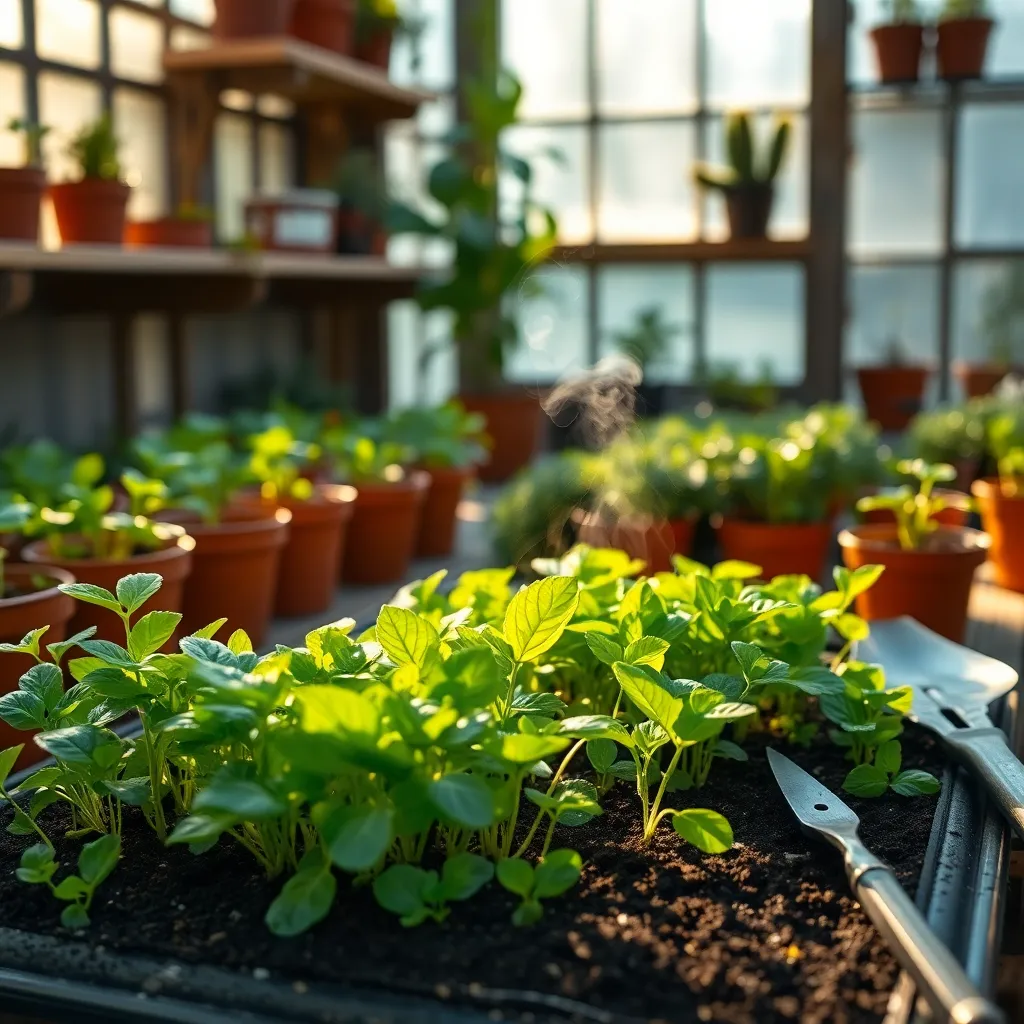
For gardeners facing chilly conditions, creating your own DIY heating mats can be a game-changer in protecting plants from the cold. Using simple materials like old Christmas lights or water-resistant heating cables, you can keep your plants warm and thriving even when temperatures drop.
Start by laying the lights or cables beneath your plant trays, ensuring they are evenly distributed to provide consistent warmth. Make sure to use waterproof and outdoor-safe materials to prevent any electrical hazards.
An added layer of insulation, such as a piece of foam board or a heavy-duty plastic sheet, can help retain heat and improve efficiency. This setup is particularly beneficial for seedlings and young plants that need stable temperatures for healthy growth.
For those seeking a more advanced setup, consider integrating a thermostat to monitor and control the temperature automatically. This ensures your plants receive optimal warmth without overheating, promoting robust growth even in the coldest months.
Automated Misting System (Consistent Humidity Levels)
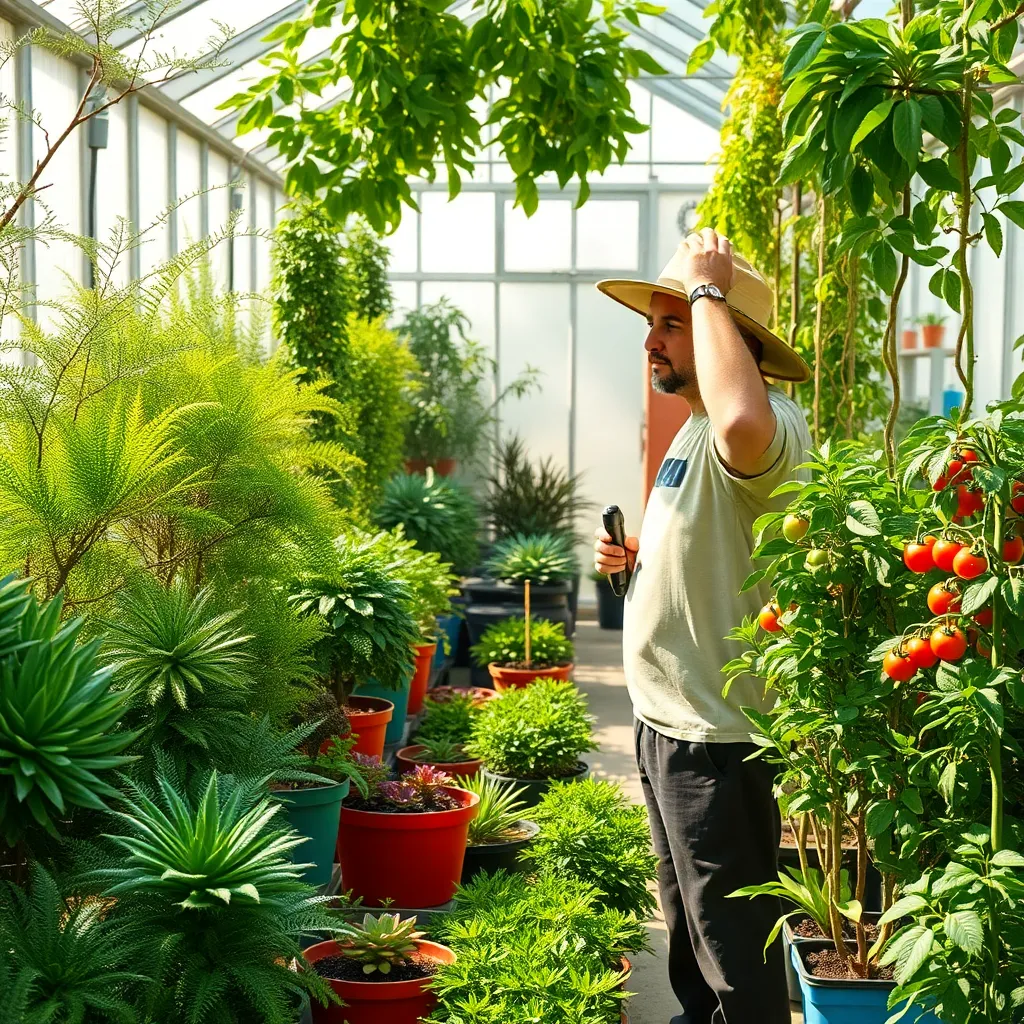
Automated misting systems can be a game-changer for maintaining consistent humidity levels in your greenhouse. These systems are particularly beneficial for sensitive plants like orchids and ferns that thrive in high humidity.
To set up an automated misting system, start by choosing a system with adjustable nozzles to control the mist’s coverage area. Position the nozzles to ensure even distribution, preventing dry spots that can stress plants.
Beginners should look for a system with a timer feature, allowing you to regulate misting periods easily. This ensures that the system only runs when needed, conserving water and preventing over-humidification.
Advanced gardeners might consider integrating a humidity sensor with their misting system for precision control. Such sensors automatically adjust misting schedules based on real-time humidity readings, optimizing plant health and growth.
Recycled Plastic Planters (Eco-Friendly Container Solutions)
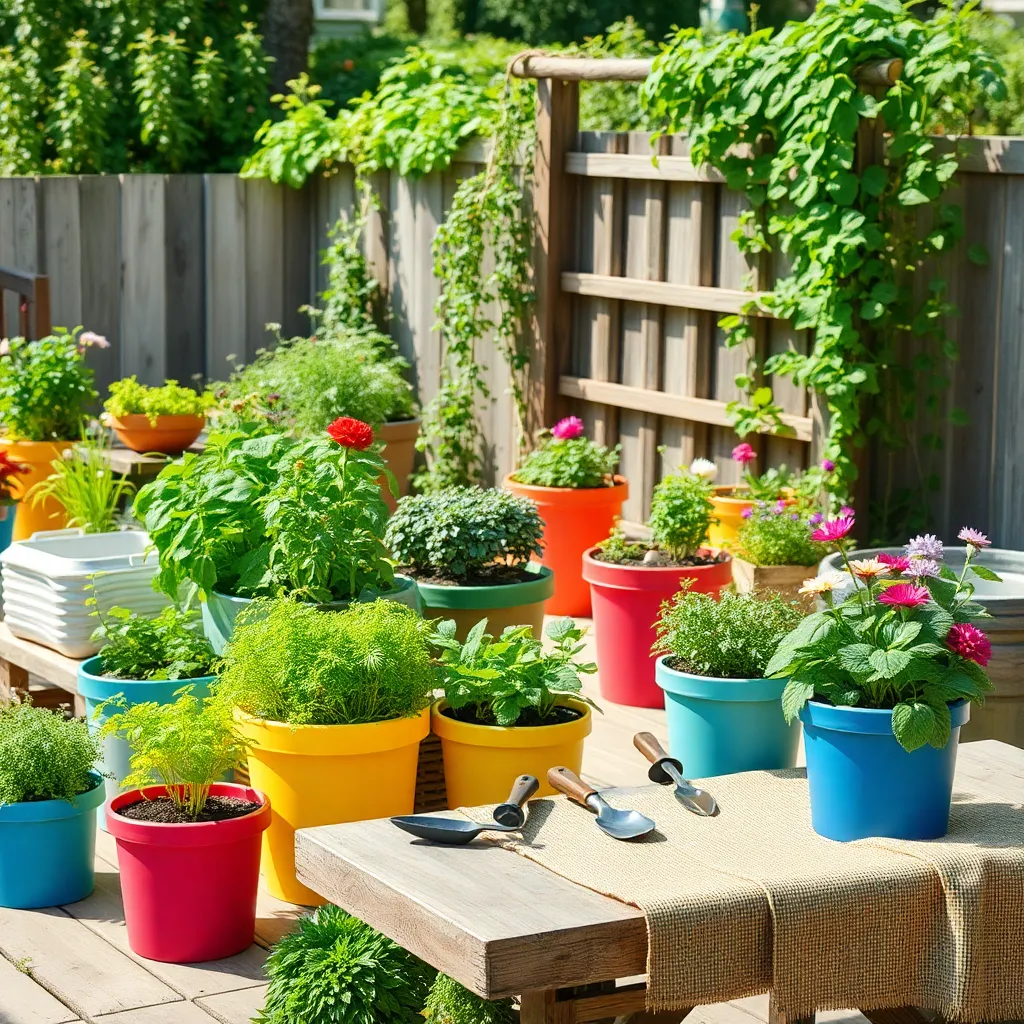
Recycled plastic planters offer an eco-friendly alternative to traditional containers, making them a perfect choice for conscientious gardeners. These planters are not only sustainable but also lightweight and durable, which makes them easy to move around your greenhouse.
Choosing the right size of a recycled plastic planter is crucial for the health of your plants. Ensure your container has adequate drainage holes to prevent waterlogging, which can cause root rot in many plant species.
For beginners, starting with herbs like basil or mint can be a great way to utilize recycled plastic planters, as they require minimal maintenance. Use a well-draining potting mix and water the herbs when the top inch of soil feels dry to the touch.
Advanced gardeners might consider using these planters for compact vegetable varieties such as cherry tomatoes or peppers. Regularly check the soil moisture levels, especially in warmer climates, as plastic can retain heat and dry out the soil more quickly.
LED Grow Lights (Energy-Efficient Plant Illumination)
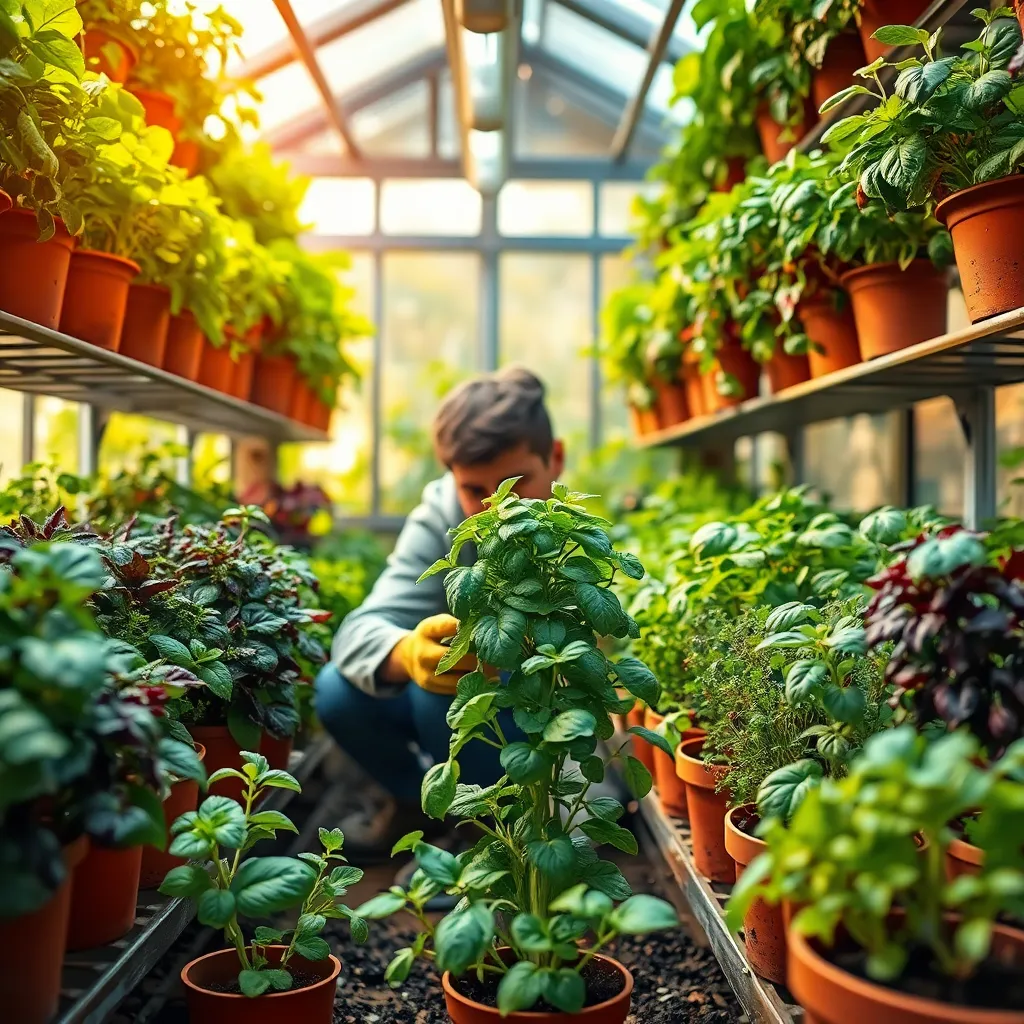
LED grow lights offer an energy-efficient solution for indoor and greenhouse gardening, providing the essential light spectrum plants need to thrive. By choosing full-spectrum LED lights, gardeners can ensure their plants receive balanced light that mimics natural sunlight, promoting healthier growth.
For beginners, setting up LED grow lights is straightforward—simply position them 12-18 inches above the plant canopy. Adjust the height as the plants grow, ensuring consistent light coverage without causing leaf burn.
Advanced gardeners might explore programmable LED systems that allow for customized light cycles, simulating sunrise and sunset. This can optimize photosynthesis and potentially yield better results for fruiting and flowering plants.
When using LED lights, consider pairing them with reflective materials like Mylar to maximize light efficiency. This technique helps to evenly distribute light across your plants, reducing shadows and promoting uniform growth.
Self-Watering Pots (Low Maintenance Hydration)
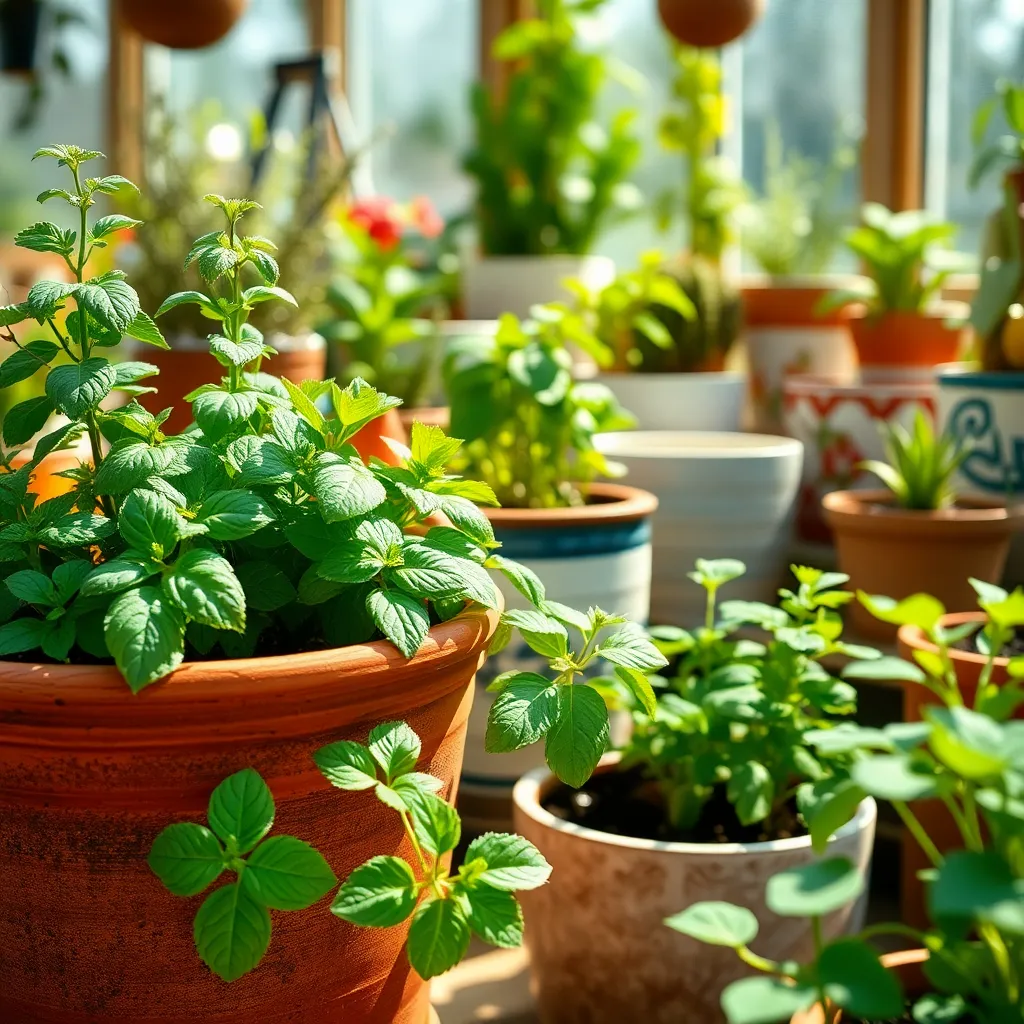
Self-watering pots are a fantastic solution for gardeners seeking low-maintenance hydration for their plants. These pots work by utilizing a reservoir system that gradually delivers water to the plant roots through a wicking mechanism, ensuring consistent moisture levels.
To get started, choose a self-watering pot that suits the size of your plant and has a reservoir large enough for the specific watering needs. Ensure the pot has a visible water level indicator so you can easily monitor when it’s time to refill the reservoir, preventing over-watering.
For optimal results, use a well-draining potting mix that facilitates water movement without becoming waterlogged. A mix containing a blend of peat moss, perlite, and vermiculite is ideal as it ensures both moisture retention and aeration.
Advanced gardeners might consider adjusting the pot’s water reservoir size based on seasonal changes. During hot summer months, a larger reservoir might be needed to keep up with evaporation and plant water uptake, while in cooler months, a smaller reservoir could suffice.
Integrated Pest Management Kits (Organic Pest Control)
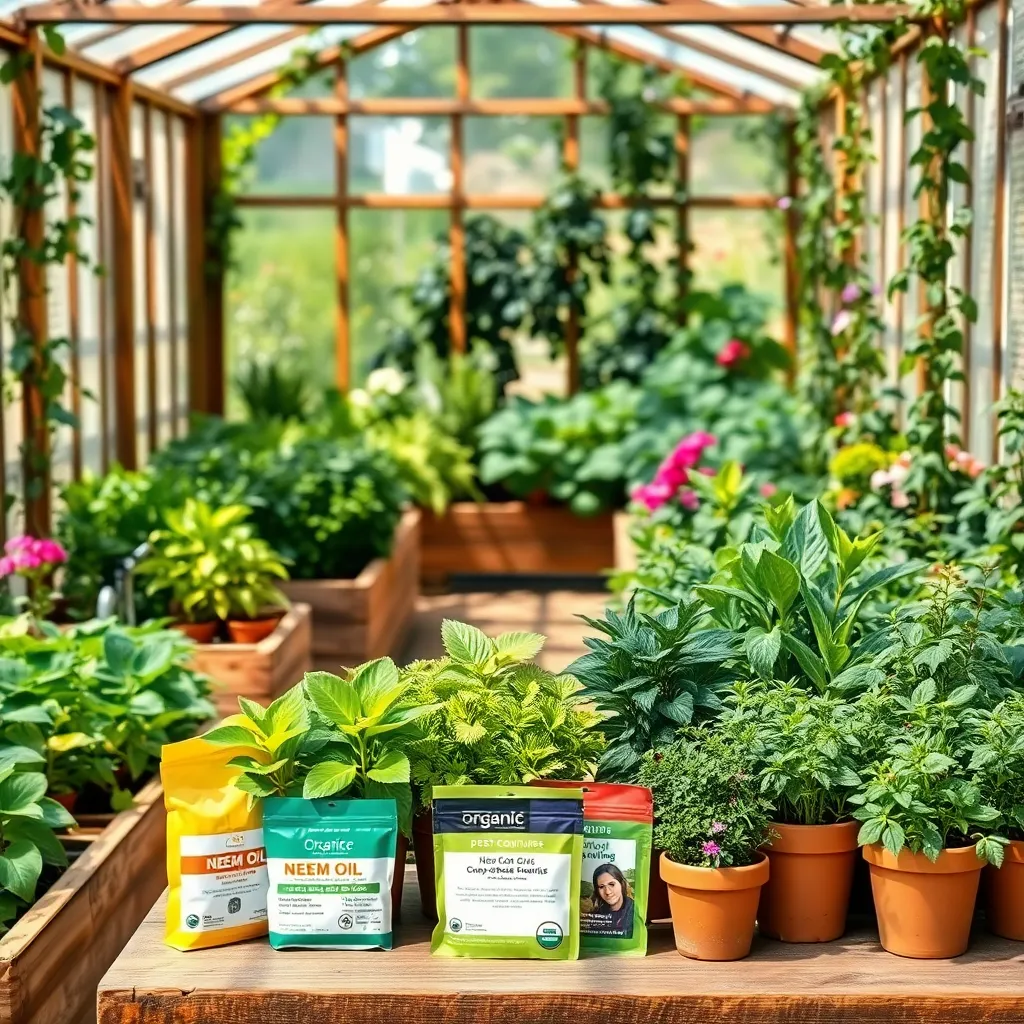
Integrated Pest Management (IPM) Kits offer a sustainable approach to keeping unwanted pests at bay in your greenhouse. These kits focus on organic pest control methods, ensuring your plants remain healthy without the use of harmful chemicals.
One effective tactic within IPM is using natural predators like ladybugs or lacewings, which can be included in many kits. These beneficial insects help control common pests such as aphids and spider mites, making them a valuable addition to your greenhouse ecosystem.
Another component often found in IPM kits is the use of traps and barriers. Sticky traps can be strategically placed to catch flying insects, while copper tape can deter slugs and snails from reaching your plants.
For those dealing with specific pest issues, IPM kits may also include organic sprays made from neem oil or insecticidal soap. These options provide targeted solutions that are safe for both the environment and your plants, offering peace of mind for gardeners who prioritize sustainability.
Solar-Powered Fans (Sustainable Temperature Regulation)
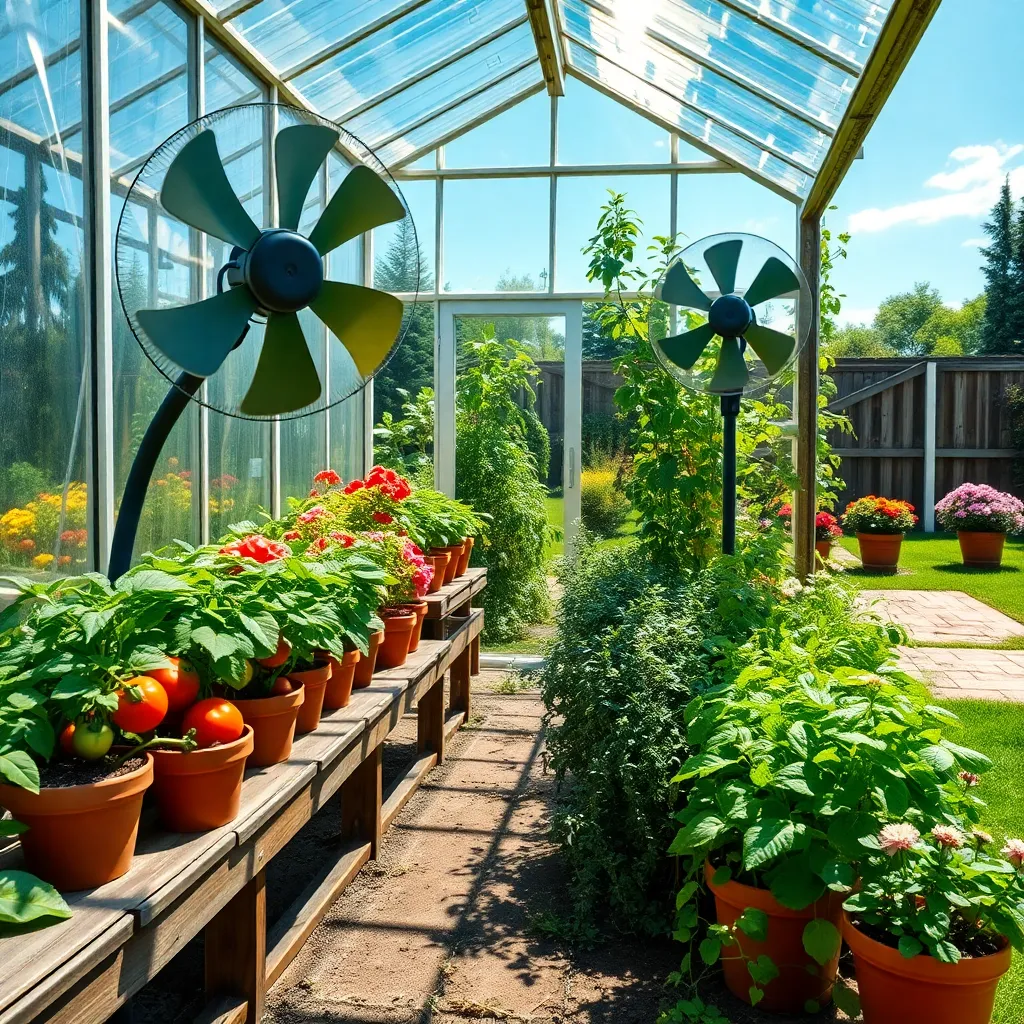
Solar-powered fans offer a sustainable way to regulate temperature within your backyard greenhouse. By harnessing the sun’s energy, these fans provide an eco-friendly solution that helps maintain optimal growing conditions without increasing your electricity bill.
To install these fans, position them to maximize airflow, ideally opposite vents or windows to encourage cross-ventilation. This setup helps to reduce heat buildup on hot days, protecting your plants from overheating and ensuring they thrive.
For beginners, start by selecting a fan with a solar panel that matches the size of your greenhouse. Many models come with adjustable settings, allowing you to control fan speed based on the specific needs of your plants and local climate conditions.
Experienced gardeners might consider pairing solar fans with a thermal mass, such as water barrels, to absorb heat during the day and release it at night. This combination can create a more stable environment, particularly in regions with large temperature fluctuations between day and night.
Modular Shelving Units (Flexible Plant Arrangement)
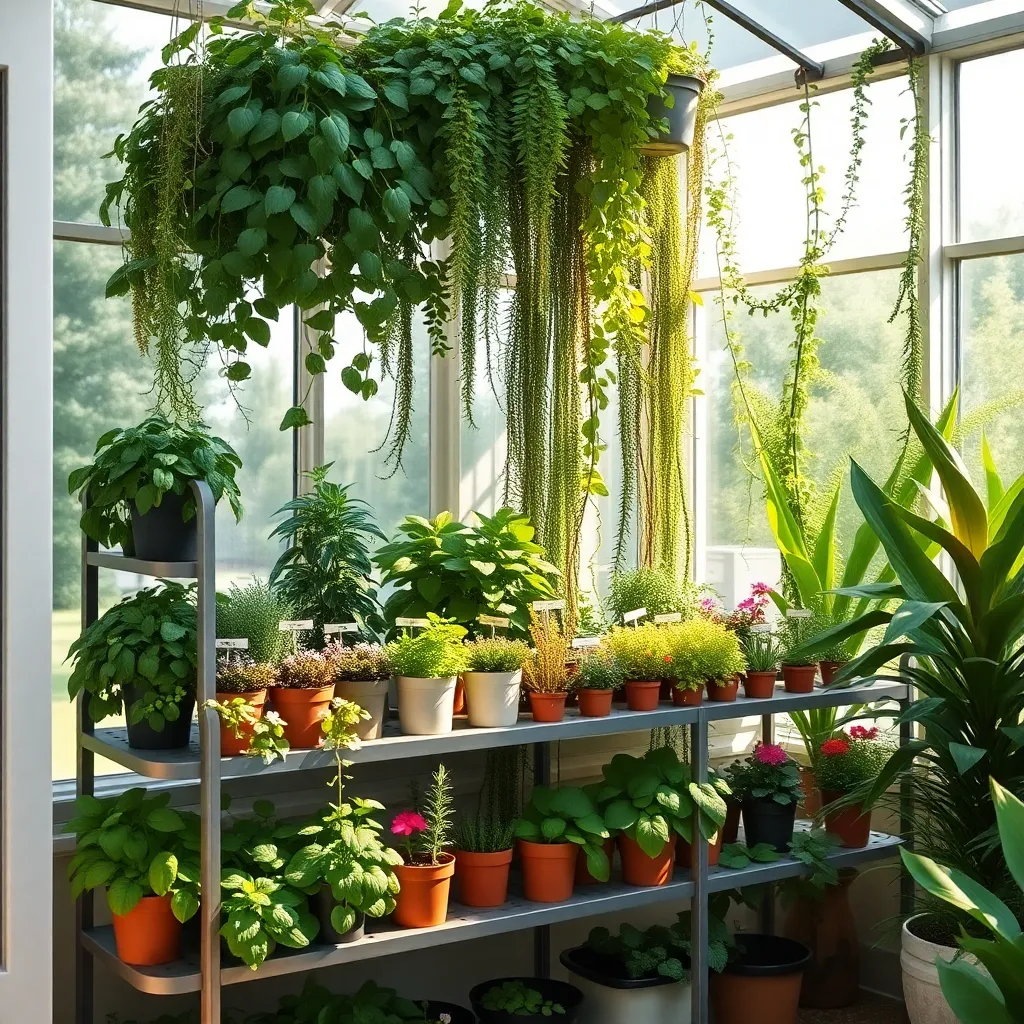
Modular shelving units provide a flexible and efficient way to organize your greenhouse plants. These units allow you to adjust shelf heights and configurations, making it simple to accommodate plants of various sizes and growth stages.
To maximize the benefits of modular shelving, consider using them to create a tiered growing system. This setup ensures that each plant receives adequate sunlight, promoting healthy growth and reducing the risk of overcrowding.
When arranging your plants, group those with similar light and water requirements together for easier care. For example, place sun-loving plants like tomatoes and peppers on the top shelves, while shade-tolerant varieties such as ferns and hostas can thrive on lower levels.
Ensure the shelves are made of durable, weather-resistant materials for longevity and stability. Investing in shelving units with adjustable features allows you to reconfigure the layout as your plant collection evolves, keeping your greenhouse both organized and adaptable.
Reflective Insulation Materials (Enhanced Light Distribution)
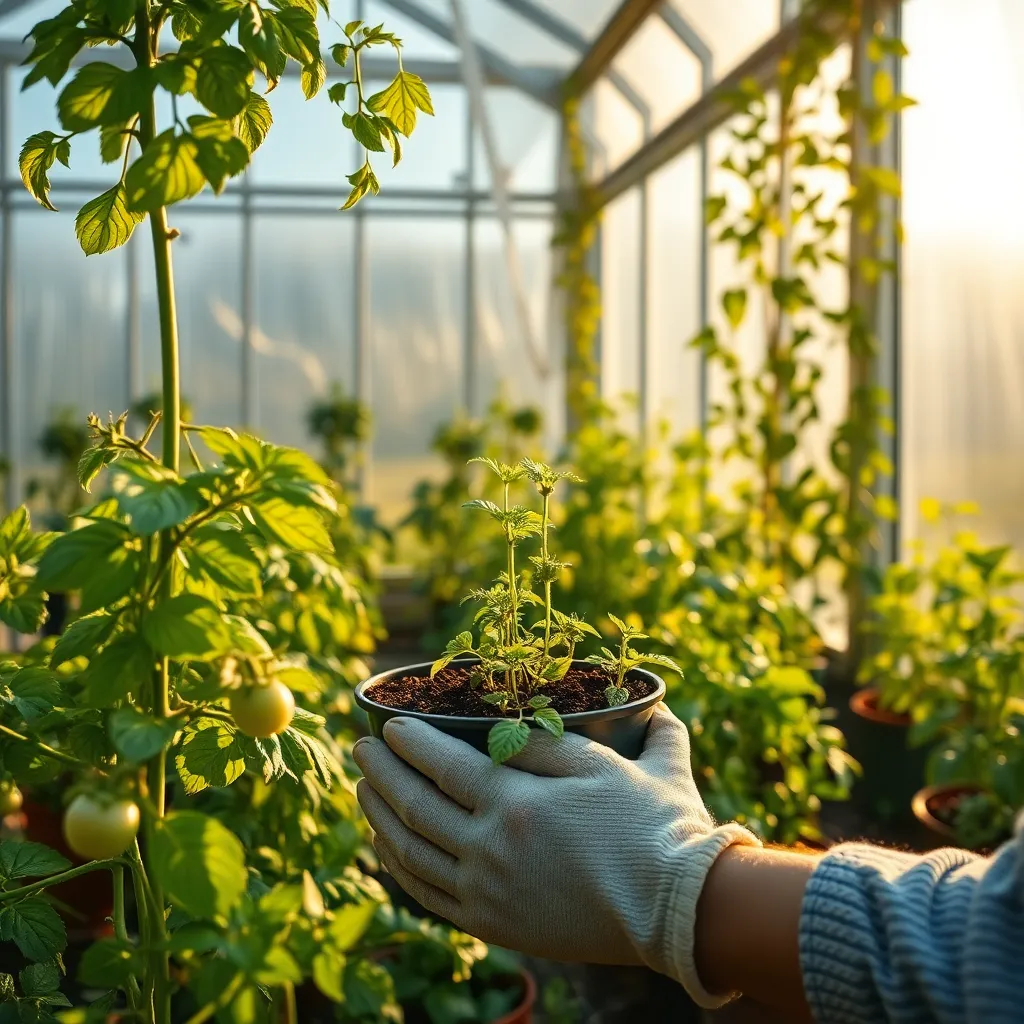
To maximize the light distribution in your backyard greenhouse, consider using reflective insulation materials. These materials can significantly enhance the amount of light reaching your plants, improving growth without additional energy costs.
Reflective insulation works by bouncing sunlight around the greenhouse, ensuring even light coverage. This is especially useful in winter months or northern climates where daylight is limited, helping plants like tomatoes and peppers thrive.
When installing reflective insulation, make sure to place it on the walls and ceiling of your greenhouse. This setup will create a bright environment, and you can supplement with grow lights if necessary, especially for light-loving plants like citrus trees.
It’s important to choose the right type of reflective material, such as aluminized mylar or foil-faced bubble wrap. These options are not only effective but also affordable, making them an excellent choice for enhancing your greenhouse’s efficiency.
Soil Moisture Sensors (Precision Watering Techniques)

Integrating soil moisture sensors into your backyard greenhouse can significantly enhance your precision watering techniques. These devices provide real-time feedback on the moisture levels in your soil, ensuring plants receive the exact amount of water they need.
For beginners, installing a basic soil moisture sensor is straightforward and requires minimal technical know-how. Simply insert the sensor’s probe into the soil near your plants, and monitor the readings to adjust your watering schedule accordingly.
Advanced gardeners might consider connecting their soil moisture sensors to a smart irrigation system. This setup can automate watering based on the data collected, ensuring your plants are never overwatered or left thirsty.
When using soil moisture sensors, consider the type of soil in your greenhouse, as different soils retain moisture differently. Sandy soils dry out faster than clay soils, so calibrate your sensors to accommodate these variations.
Seed Starting Trays (Efficient Germination Setup)

Starting seeds in trays is an efficient way to kick off your gardening season with a head start. Choose seed starting trays with good drainage and a clear cover to create a mini greenhouse effect that retains moisture and warmth.
To ensure successful germination, use a high-quality seed starting mix that is light and airy, allowing for proper root development. Avoid using garden soil, as it may compact and hinder the growth of delicate seedlings.
Place your trays in a location that receives plenty of indirect sunlight, or use a grow light if natural light is insufficient. Maintain a consistent temperature of around 70°F (21°C), which is ideal for most seeds to germinate.
Once seedlings emerge, keep the soil consistently moist but not soggy to prevent root rot. As the seedlings grow, gradually introduce them to outdoor conditions through a process called hardening off, which strengthens them for transplanting.
Rainwater Collection System (Eco-Conscious Water Sourcing)
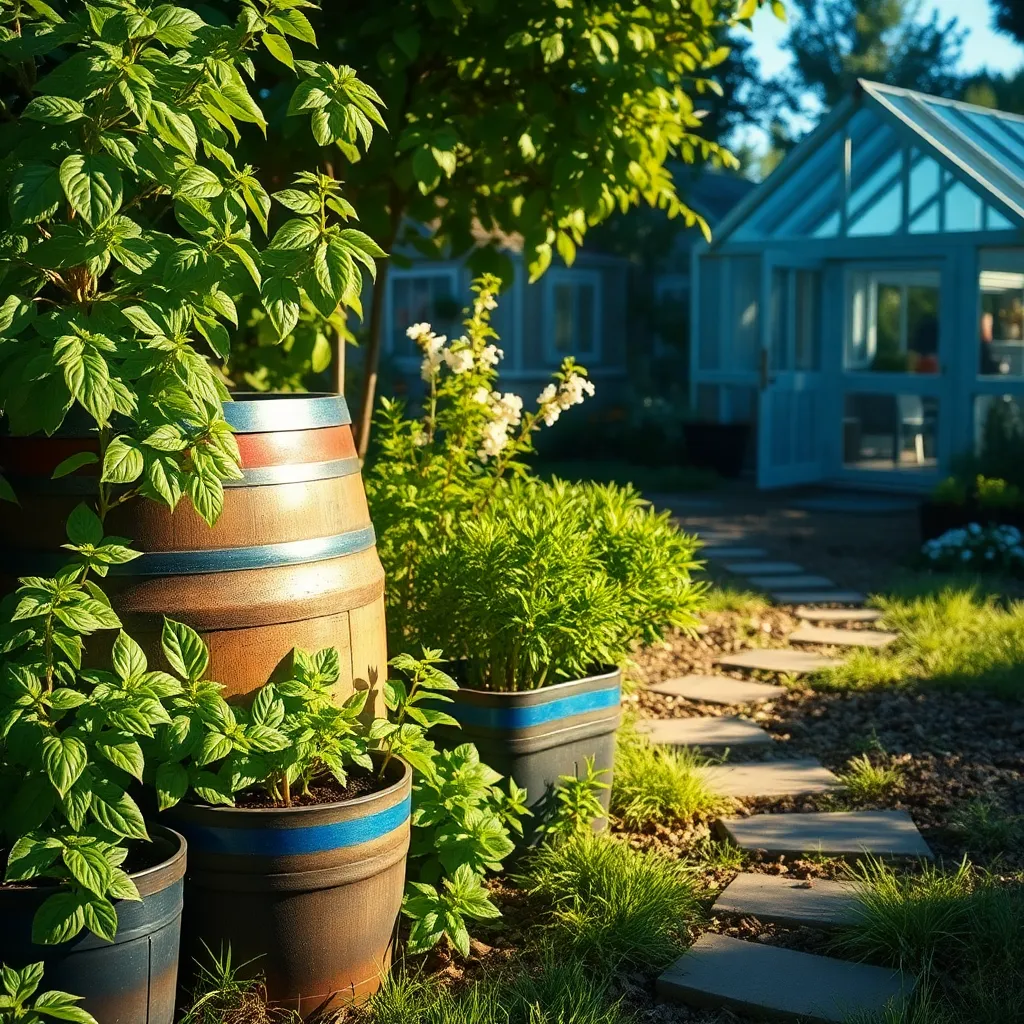
Collecting rainwater is a sustainable way to water your backyard greenhouse plants, reducing dependency on municipal water supplies. Start by installing a rain barrel beneath a downspout to capture runoff; ensure it has a secure lid to prevent debris and mosquito breeding.
For an effective setup, position the rain barrel on a raised platform to increase water pressure for gravity-fed watering systems. Regularly check the barrel’s screen filter for clogs to maintain a steady flow of water.
Advanced gardeners can connect multiple barrels for increased storage capacity, ensuring they have enough water during dry spells. Consider using a drip irrigation system connected to your rainwater collection to distribute water evenly, minimizing waste and maximizing plant hydration.
To further enhance your eco-friendly approach, use the rainwater to irrigate your greenhouse in the early morning or late afternoon. This practice reduces evaporation and ensures your plants receive water when they can most effectively absorb it.
Portable Greenhouse Carts (Mobile Plant Care Solutions)
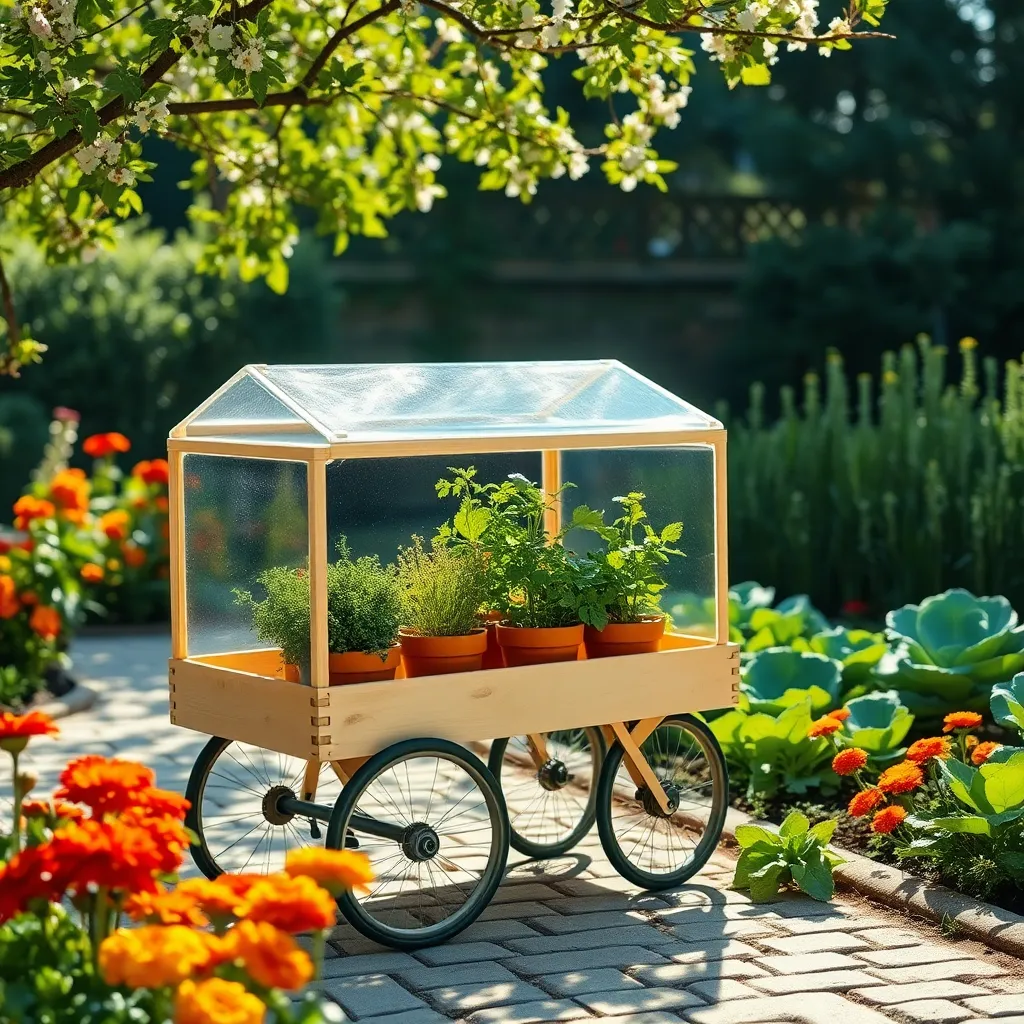
Portable greenhouse carts offer a flexible solution for gardeners looking to optimize their plant care routines. These mobile units allow you to move plants to take advantage of varying sunlight throughout the day, ensuring they receive the optimal amount of light exposure.
Using a portable greenhouse cart, you can easily adjust the growing environment for your plants. This mobility is especially beneficial for managing temperature fluctuations, as you can shift the cart to a warmer or cooler location depending on the weather conditions.
Beginner gardeners will appreciate the simplicity of maintaining plants on a portable cart. To get started, choose a cart with sturdy construction and ample space for your pots, ensuring it has a weather-resistant cover to protect your plants from sudden rain showers.
For the more experienced gardener, portable greenhouse carts can be used to create a rolling seed-starting station. Consider investing in carts with adjustable shelves, which allow you to customize the layout for different plant heights and optimize the use of vertical space.
Conclusion: Growing Success with These Plants
In exploring the ’15 Best Backyard Greenhouse Projects,’ we’ve delved into a variety of relationship concepts that mirror the nurturing environment of a greenhouse. From cultivating open communication and fostering trust to maintaining balance and celebrating growth, each concept underscores the importance of tending to your relationship’s needs with care and attention. We’ve also highlighted the significance of adaptability, emotional support, and shared goals, emphasizing how these elements contribute to a thriving partnership.
As a next step, why not choose one concept that resonates most with you and your partner, and dedicate time this week to explore it together? Whether it’s setting aside 15 minutes each day for meaningful conversations or planning a joint project that nurtures both your interests, taking action is key.
Remember, great relationships don’t just happen; they are cultivated over time. Bookmark this article now to keep these transformative ideas at your fingertips, ready to inspire you whenever needed. As you implement these concepts, envision the flourishing success of your relationship, knowing that with every effort, you’re building a resilient partnership ready to withstand any storm. Your relationship greenhouse awaits—start nurturing it today!

